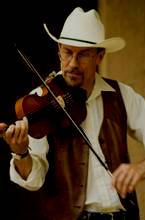When our forefathers came to the place known as the “Americas”, they took with them all of the possessions that they could comfortably transport on the long and treacherous journey across the oceans. Included in these possessions were various musical instruments. Not only did the early settlers carry their physical possessions, they also brought along with them their customs and traditions. Various methods of preparing food, multitudes of languages, and even styles of clothing were different from one group of people to another. Music and dance of many styles were brought to this county too.
Back then, at least at first, people settled in to collective areas in order to support and help each other integrate into this new and sometimes difficult land. As part of this integration, people had to live and work together to survive. It was not uncommon to have a diverse group of people from different parts of the world living in communities together even though language barriers tended to cause difficulties. After a period of time of living together as a group, things changed and some groups of people amalgamated with others. Because of this, customs and traditions began to evolve. Over a period of time, these customs and traditions changed, some slightly and some more radically.
Education, of all types, suffered as people moved away from populated areas to more rural destinations. The journey from farm to town sometimes grew to a length that made it impossible for children and adults to travel the long distances daily or even weekly. New books were difficult to come by. So, people used the same texts for many years if they had any at all. It was not uncommon for teaching to be done by parents or others without books. This method is commonly called “teaching by rote”. Because teachers had to teach by memory, students had to learn by memorization. If reading books were in short supply, so too was written music. Many musicians never even saw a note written on a page and yet, they became proficient at playing the music that they “knew”.
As many of us can attest, the testimony of incidences and facts can change if only based upon memory. One person’s version of a story can be very different from someone else. Any musician who has played the same song over and over again can tell you how, over a period of time, melodies, rhythms, and structure can change. Even drastic changes can occur. A song can be changed from a major key to a minor key. So it happened with the music of our forefathers.
Many of the “musicians” who commonly played back in the early days of our Country and before its inception were farmers, clerks, and tradesmen and women. Being a full time musician in Europe was limited to a miniscule group of very talented individuals. Here, in this land, it was even more difficult. As you moved away from populated areas it was harder, and as you moved further away from the populated centers it became virtually impossible.
Music teachers were few and far between. If a future musician wanted to play an instrument and there was a violin in the house but no piano, they were probably going to be a violinist rather than a pianist. If the instrument was handed down from their Great-Grandmother and no one in the family played an instrument, they would have to be self-taught if they really wished to learn. Methods that are commonly taught by a real violin teacher, such as the use of vibrato, would be unknown and therefore unused. It was precisely because of this that the distinction of “fiddle” as opposed to violin became a viable term for the same instrument. “Fiddle” usually does not generally incorporate the use of vibrato and therefore has a much “dryer” sound.

Perfect tuning of any instrument is very difficult, especially without a tuner. Pianos would sound differently from place to place if the tuning of the instruments was less than perfect. Songs would sound differently if instead of an oboe, a flute or a guitar was used in the performance a tune because that was the only instrument that they had.
Just as any of us can sing the song “Happy Birthday to You”, we can all vouch for the butchering of the song by certain of our family members who can’t sing. If you had never heard that song before and for the first time heard it performed by a bad singer, you might believe that the song was written with all of those incorrect notes. Well, the same is true for our ancestors.
Many tunes from the past, which were performed in other “cultured” countries were brought here and changed. Either by accident or by evolution, some of these songs would be unrecognizable or even offending to the original composer. Melodies changed. Lyrics changed. Even rhythmic patterns changed. Think about it for a second. If music changed that much, what do you think happened to the popular dances of the past? That’s right, they changed too.
Without a professional dance instructor or dancer who had been trained to teach the exact steps to particular dances, the steps of many popular dances would necessarily be changed. The perfect structure of the dance mattered less than the fun of the dance. Popular dance steps varied from France to Spain, and they had the dance instructors. So, there was no surprise that they would be very different all the way across the ocean.
Just as we can now agree that music of the past was wide and varied both musically, stylistically, and out of necessity instrumentally, we must also agree that the sound of the music varied from place to place. Prior to the invention of the radio, TV, and the computer, the place where the music was from had a great deal to do with the sound of the music. Robert Johnson was born in Hazlehurst, Mississippi. He became a great “Blues” musician. Not far away now, but worlds away at the time, Southern Appalachian Mountain inhabitants were playing “Hillbilly” music. People from the Lower Great Plains, like Bob Wills from Texas were playing “Western Swing”. Woody Guthrie was born in Okemah, Oklahoma and even though he did not live that far from Texas, he played “Traditional American Folk” music. Bill Monroe was born in Rosine, Kentucky. He became known as the “Father of Bluegrass”. All of these people were contemporaries. The all lived in the early 20th century and they all lived in the South.
Why all the history? “Traditional Folk” music, “Hillbilly” music, “Western Swing”, the “Blues”, not to mention the influences of the music of “South of the Border” or Mexico, all help to make up a type of music that people like to call “Traditional Country Music”. None of this music sounds the same. Some would say that “Western Swing” is ruckus and loud. Others would say that you can’t dance to “Traditional Folk” music. Still others would say that the “Blues” is boring and overplayed. What about the people that say that the music of “South of the Border” isn’t even from this country and should be considered “Latin” music not “Country” music.

Even this type of music has evolved with the introduction of recordings by “Pop” singers like Patsy Cline, which incorporated the use of a full orchestra as well as, and in some cases, instead of the “traditional” instrumentation. Jim Reeves and Willie Nelson recorded many pieces of music using this method and became quite popular in spite of the uproar in “Country” music circles that it caused.
Not too long ago some artists and groups like Elvis Presley, Alabama, and Little Texas, just to name a few, began to produce “Country” music that was influenced by the music known as “Rock and Roll”. An uproar in “Country” music circles ensued and still continues today, although the Grand Ole Opry and the Country Music Hall of Fame has inducted many of these “Rock and Roll” influenced artists and groups into their ranks and accepted them as certified “Country”.
Well, I guess my point is that at some time, not too long ago “Country” music was influenced by the music known as “Rock and Roll”. Some would say that “Country” music that is influenced by “Rock and Roll” is ruckus and loud. Others would say that you can’t dance to “Country” music that is influenced by “Rock and Roll”. Still others would say that the “Country” music that is influenced by “Rock and Roll” is boring and overplayed. Some people say that “Country” music that is influenced by “Rock and Roll” isn’t even “Country” music and should be considered “Rock” music not “Country” music.
The word “traditional”, according to Merriam-Webster’s Online Dictionary, means: the handing down of information, beliefs, and customs by word of mouth or by example from one generation to another without written instruction. So, no music that is written today can be considered “traditional”. It takes time to develop a tradition. In time, when our future generations look back at “Country” music that is influenced by “Rock and Roll”, it will be considered “Traditional Country Music”. Embrace the future.
Blog by Joe Lemire

